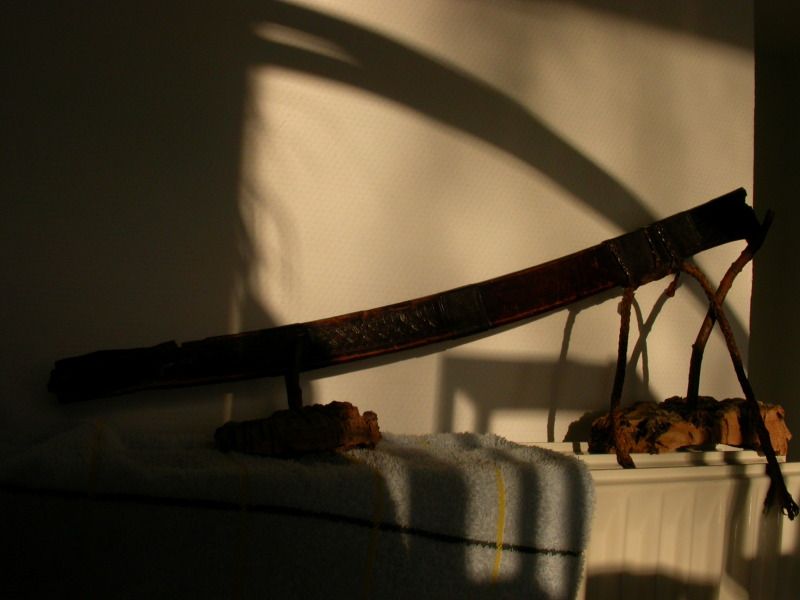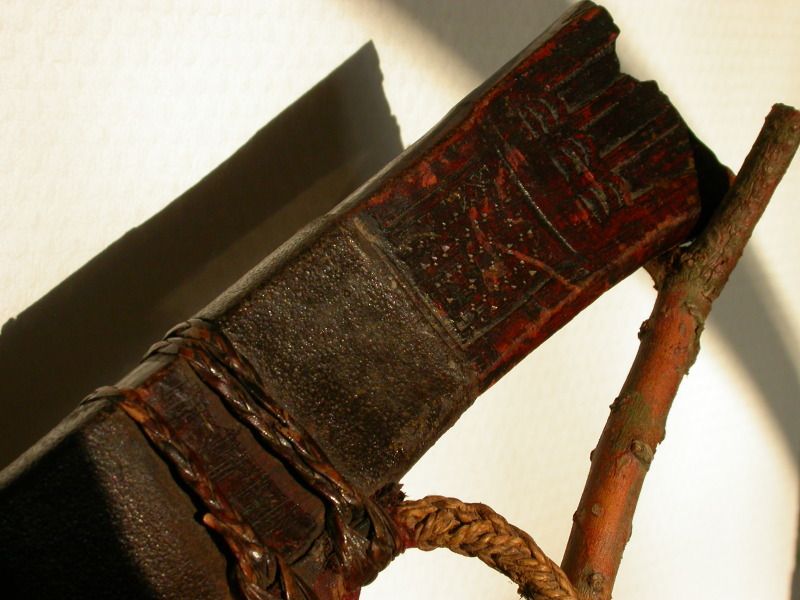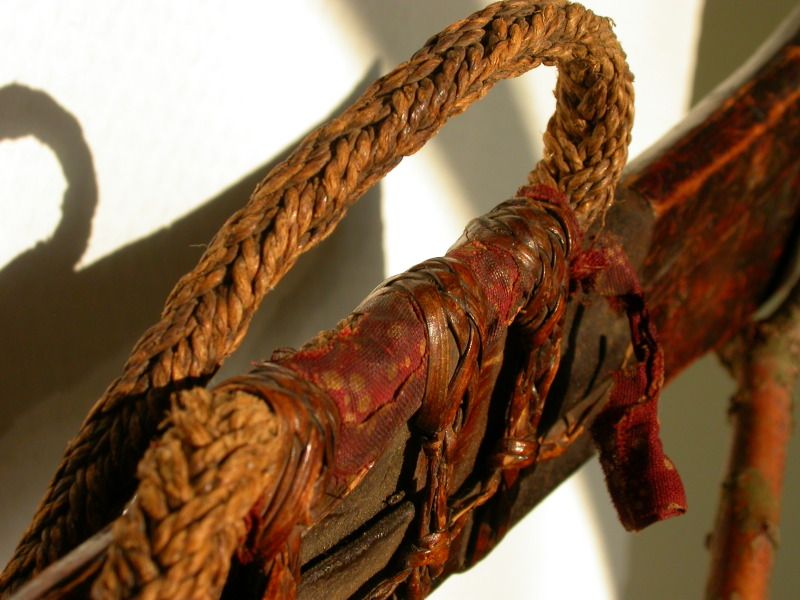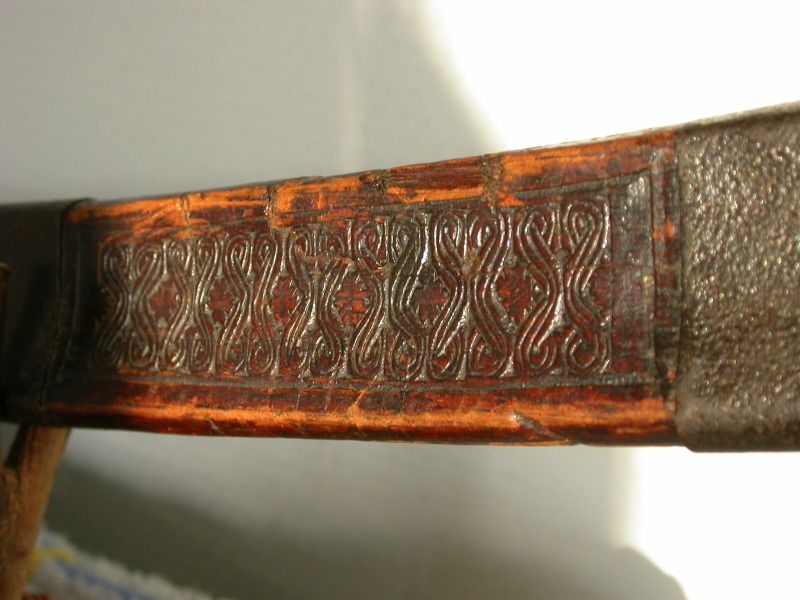Hi Carlos, and thanks for putting up a picture of your paka too! It looks great! I see yours is of the other type, where the spine and edge runs parallel until the tip and with no shoulder. How thick is the blade at the guard on this type? I'm very curious to know as I've never had the chance to handle any other paka than my own.

I've finally had a bit of sunlight in my end of the world and so I managed to snap some photos of the scabbard and especially some closeups of the decorations, for future comparisons and forum reference.
Here is the whole scabbard minus the part that is long gone. As you can maybe see, the sequence from throat to tip goes: carvings - tin band - drawing - tin band - carving - tin band - drawing//break. Considering the length, I suspect that then there had been another tin band, more carvings and then a final tin band at the end - like seen above in Carlos' complete piece.

Here are the throat carvings - notice the cool little butterflies.

At the first tin band, the belt cord is attached. The cord material is not rattan, but something which feels similar to jute. The braid is round and the cord very flexible. What I really love though, is the tiny piece of dirty textile woven in under the rattan bindings. I can't help but wonder if some Murut sacrificed his handkerchief or a bit of his shirt, to get the fit just right. -and look, there are little flowers on it!

This little piece has for me led to a new love of and search for textiles on swords.

After the first tin band is a panel with these patterns. They seem to have ben drawn or somehow tattooed onto the wood, beneath the coat of lacquer/varnish. I'm wondering whether the coating was applied natively or by some collector back in the day.

After the next tin band we have this panel of carvings. It is well worn now, but the beautifull patterns are still well visible. Very distinct and certainly different from the carved motifs of the Dayak.

I haven't photographed the following and last panel, as it is decorated with similar drawings as the panel described above. These are also hardly visible, due to wear and the scabbard breaking here.
I hope you all enjoyed the post guys. If anybody is sitting out there with pictures of your own pakayuns - please do post them up here!

Very best wishes, - Thor